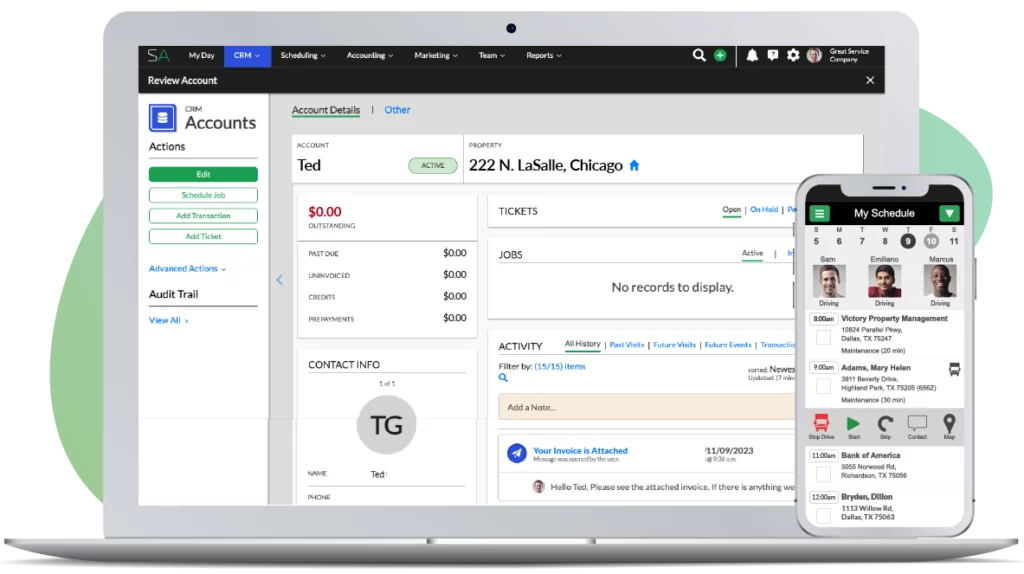Jonathan:
Howdy, answering another question. So the question is this, can you explain how I determine what profit is? It’s really simple, profit is nothing more than all the money coming into your business called revenue minus all the money going out of your business called expenses. Within expenses, you’ve got the cost of buying your trucks if you’ve got a loan on your trucks. You’ve got the interest expense on the truck plus the principle, the payment for the truck. Interest is wrapped into that, you’ve got your gasoline, your marketing cost, your employees all of that. It’s really that simple.
When you really dig into the financial statements, which are called profit and loss statements, sure there are a lot more categories on it and it breaks it down into categories such as the cost of goods sold, and things of that sort. But if you think about it the most elementary example it’s just what are the inflows, money coming in, what’s going out the back door, that’s expenses and it’s different between the two. You take all your income, you minus all your expenses, you got profit. It’s really simple.
Now if you want to analyze that data and if you want to understand that data, then sure there are things within that, that you want to learn. There are more topics you want to understand but at the end of the day, it’s revenue minus expenses. At the bottom, you get a number and that number is either your profit or it’s your loss.
so how do you get this? I’d recommend something like QuickBooks. You can do QuickBooks online, you can do QuickBooks Desktop. QuickBooks Online is not as advanced as QuickBooks Desktop, but it’s the future, that’s where Intuit is pushing everyone to QuickBooks Online. And how do you get your statement when you’re using QuickBooks Online? You do nothing more than putting all your revenue into the system and then you log all of your expenses. Now your profit and loss statement that QuickBooks Online or QuickBooks Desktop will give you is a tool that you can use to understand the health of your business, understand where you’re at. It’s really all it is, it’s a tool, it’s a guide.
Now with that exact same data though, your accountant will be able to generate your taxes, they’ll be able to tell you how much you owe on a quarterly basis, on an annual basis, with all that exact same data, they’ll be able to tell you how much you owe in sales tax and so from just the putting in of your revenue, putting in of your expenses, you’ll be able to do your taxes, pay your sales tax and you’ll have a tool to manage your business. It’s a historical tool, it says what happened in the past, it doesn’t necessarily project the future, it just says based on the income and expenses of the business, here’s what happened last month, here’s what happened the month before. But you can use that to understand the health of your organization.
The problem that most companies make is they don’t put their revenue in very fast. Or they don’t put their expenses in very fast and they do it at the end of the year or they do it once a quarter or every once in awhile they’ll sit down and catch up on three months of income and expenses. And as a result, it’s always hard to get taxes out at the end of the year. And as a result, you never have this tool, your profit and loss statement, some other reports you can get that help you understand what’s going on. Are you winning? Are you losing? Are you making progress or are you falling behind? Unless, you get your data in fast, as in every week, then you’re falling behind.
So when you’re first getting started in the business, I’d recommend that you do this activity a couple times a month. And then once you’re really going in business, I’d recommend you do it at least once a week. And then when you’re really getting going, I’d recommend you do it twice a week. But that’s just my opinion. And the reason I have that opinion is I see most companies have no understanding of what’s going on in their business because they have no data and they have no data because they’re not putting in their income and their expenses fast enough. And they’re waiting on their accountant to do it every few months.
So I’d encourage you to use something like QuickBooks. I’d encourage you to get all of these numbers into the system fast. And when you have that information, you’ll be able to make wise decisions and you’ll have an advantage over a vast number of your newer competitors in the marketplace that don’t do any of this and won’t do it for years to come.
So I recorded the video and I watched it and then I realized I left out one really important concept and that is revenue minus expenses equal profit and all that’s true. But there’s one little piece and that is your salary that goes in there. And that is an expense but until you put your salary into your numbers, you don’t really know profit. I’ve got other videos on this. There’s a video that I did with Greg Crabtree, you can go search. It talks about understanding this and determining salary and things like that. But the mistake that a lot of companies make early on is they have revenue minus expenses, no salary in there for them and at the end, they have this big profit number like yeah, we’re making 30% profit on our company. Not really, because you didn’t put your salary in. Your salary has to come out of your expenses. A fair salary and then that determines how much profit you’re making. So do a little searching on that one if you’re curious about it but your profit is only accurately reflected if you’re getting paid a salary from your business and it’s a fair salary for what you’re doing for the business. Good luck.
Podcast: Play in new window | Download
Subscribe: RSS



